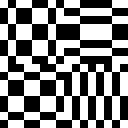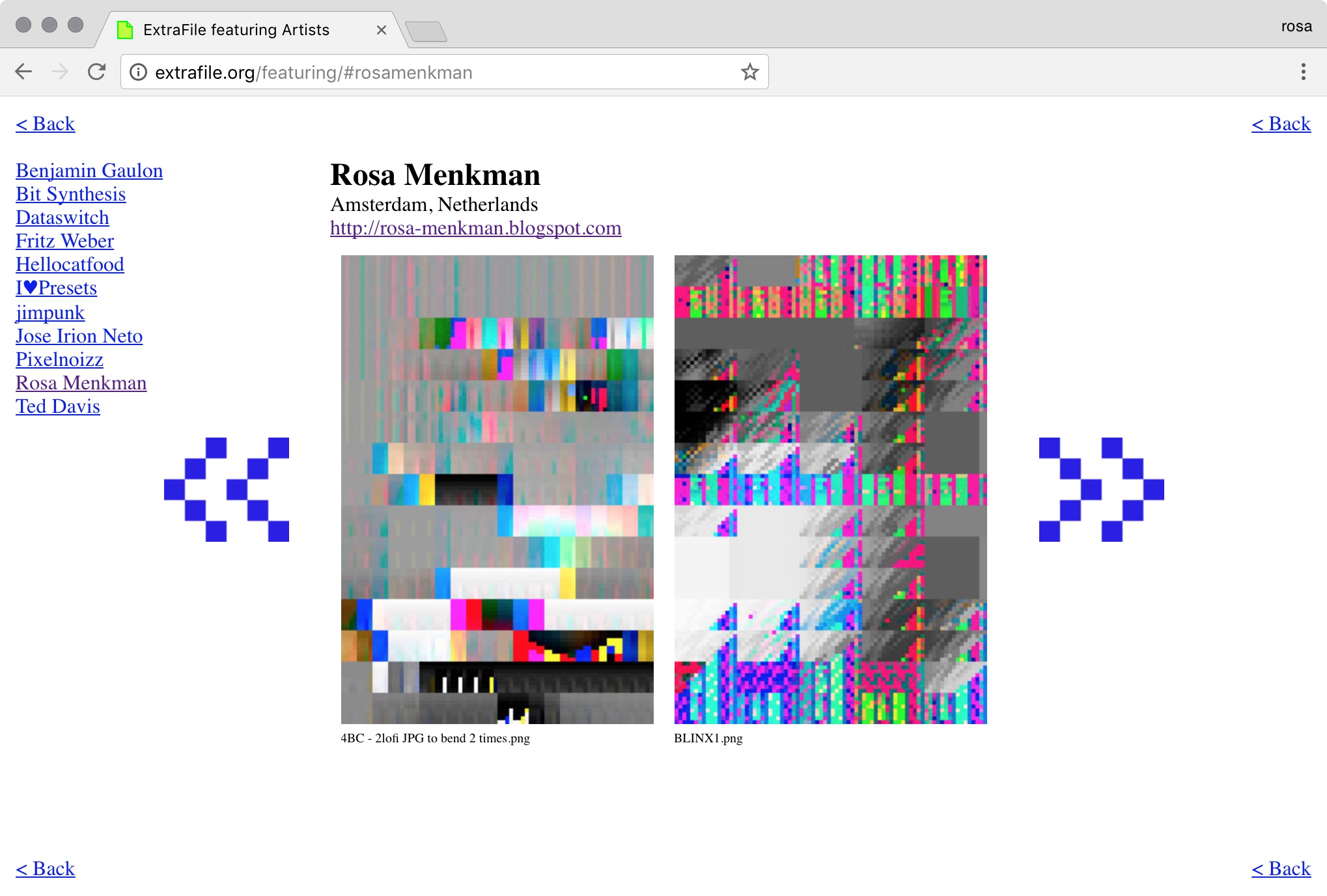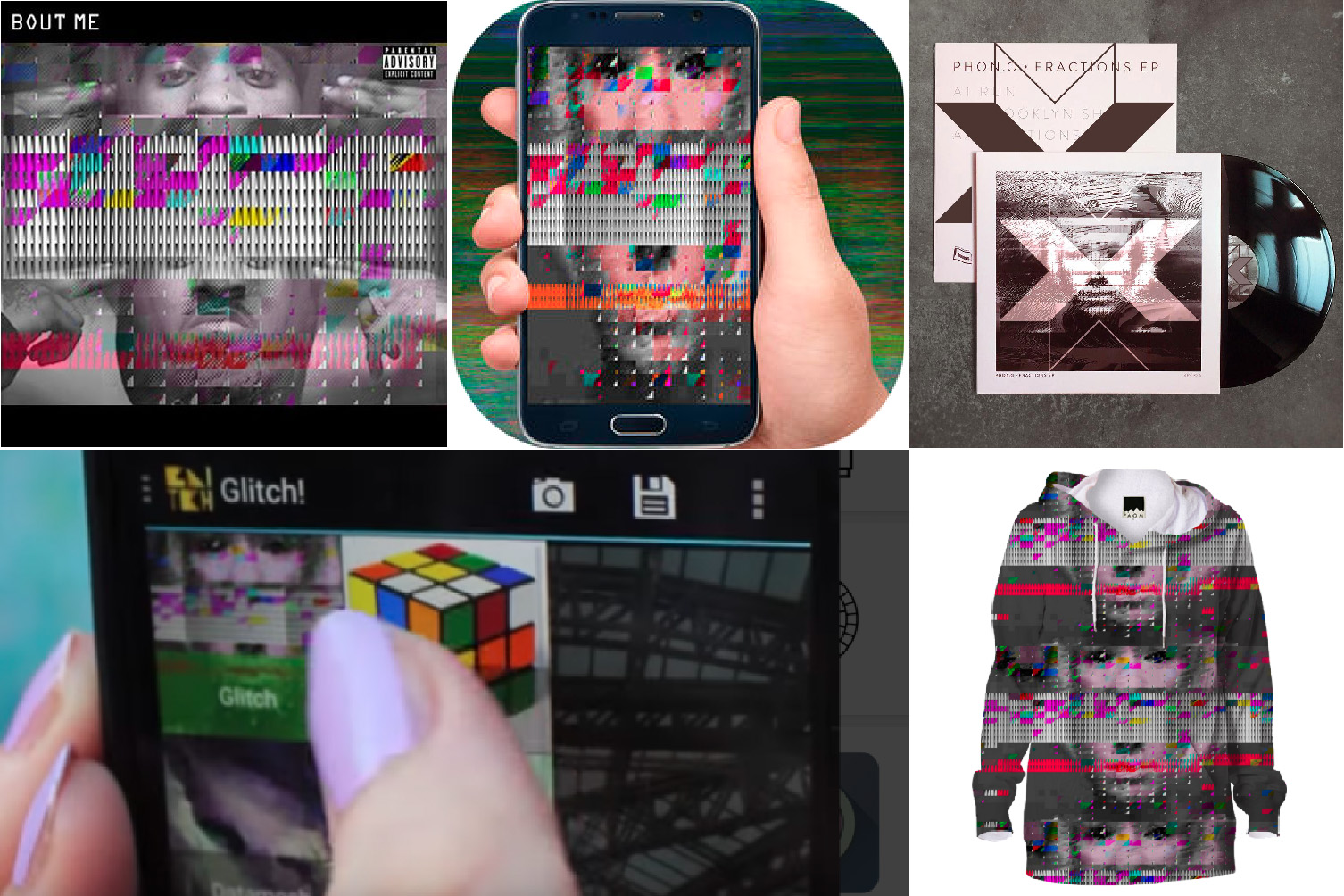
PDF: A Guide to Databend Compression Design, 2010.
In A Vernacular of File Formats, I subsequently compressed a source image (a still of the Collapse of PAL featuring my face) via different compression languages. I then implemented a same (or similar) error into each file, to let the otherwise invisible compression language presents itself onto the surface of the image.
A file format, or encoding/decoding protocol, organises data according to a particular syntax, often to make the data that it took when the image was captured, smaller. These organisations are commonly referred to as compression algorithms (or language).
The choice of an image compression depends on its foreseen mode and place of usage; for instance, if the file is meant to be printed or redistributed digitally, another type of accuracy is necessary then when a software or hardware will render the image on screen.
In some cases, the image creator may choose not to use any compression at all, but instead to store the data as an unprocessed file. Images shot by professional photographers for instance, will be shot and stored in a RAW image file format. A RAW image file contains minimally processed data, which normally comes straight from the image sensor (for instance a CCD chip), in order to avoid any impurities (artifacts) that might be involved with image mediation, transcoding or compression.
︎Download the PDF
︎Polish translation by Bogumiła Piotrowska, Piotr Puldzian Płucienniczak, Aleksandra Pieńkosz
︎︎ flickr documentation
︎sonification workshop

A Vernacular of File Formats installed as part of the Stedelijk Museum Amsterdam Base show, Amsterdam, Netherlands, 2020.
The Vernacular of File Formats Archive (16GB of data) is part of the Base collection of Stedelijk Museum Amsterdam since 2016.
The Vernacular of File Formats Archive (16GB of data) is part of the Base collection of Stedelijk Museum Amsterdam since 2016.
 Pinakotheka Munich, Germany, 2023.
Pinakotheka Munich, Germany, 2023.  Order and Progress. Fabio Paris Gallery. Brescia, Italy. 2010.
Order and Progress. Fabio Paris Gallery. Brescia, Italy. 2010.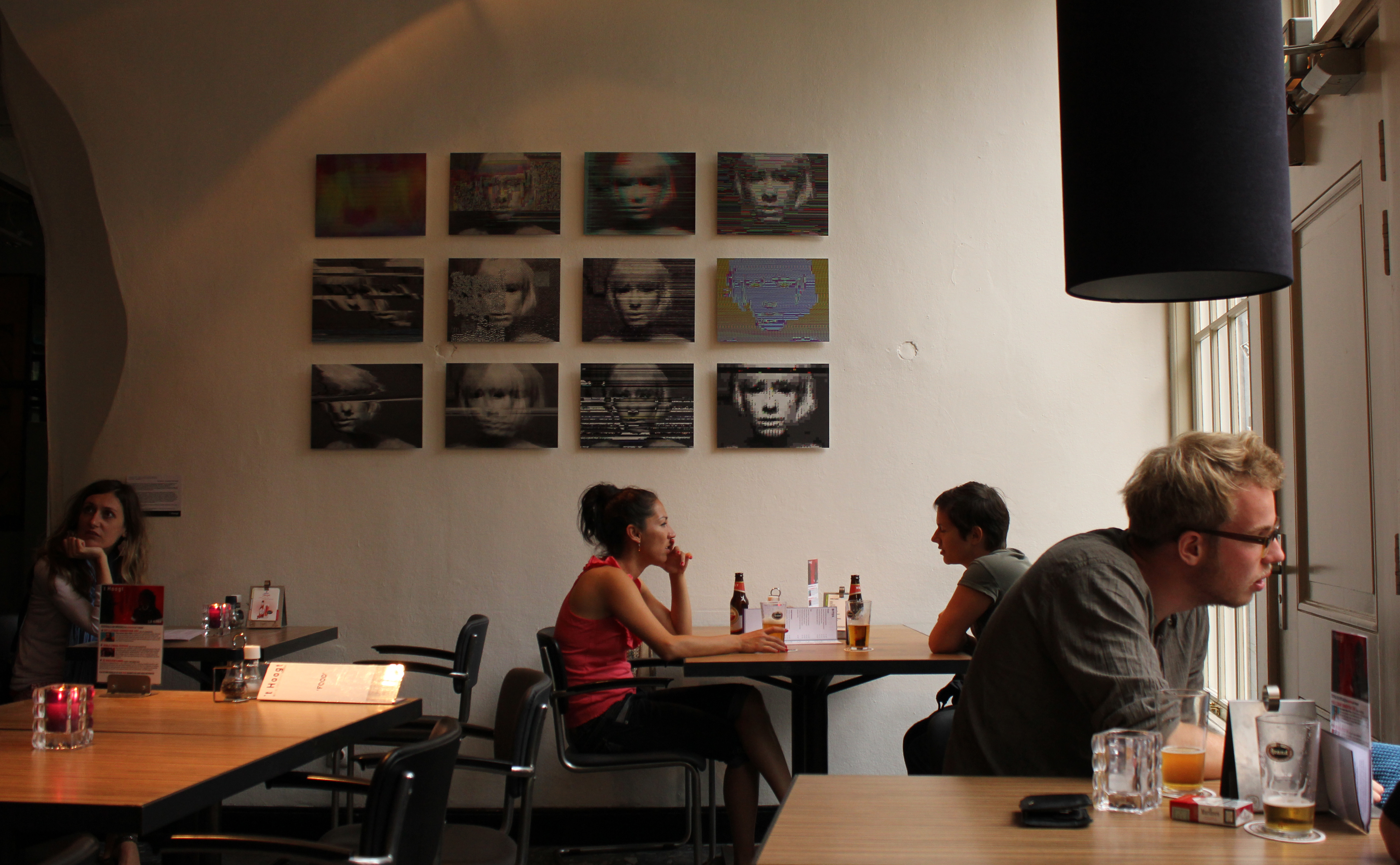 Vernacular of File Formats ft. Kim Asendorfs Extrafile. Expositie for Re:Visie NFF augustus t/m 30 september 2011.
Vernacular of File Formats ft. Kim Asendorfs Extrafile. Expositie for Re:Visie NFF augustus t/m 30 september 2011.The Archive of the Vernacular of File Formats
In the winter of 2016, an 18.9 GB digital archive of A Vernacular of File Formats (edition of 3 plus 1 artist’s proof)—containing the original PDFs, a catalogue of databent images, video works, and related documentation—was jointly acquired by MOTI and the Stedelijk Museum Amsterdam.
To introduce the collection to the Stedelijk’s audience, I was commissioned to produce the video essay Where Should the Archive Begin and End?, which was published in Stedelijk Studies.
From the Introduction to the Vernacular:
When noise becomes filter art [ or when cool becomes hot ], (2010 / edited 2017)
Glitches are hot. It is clear from what we see on MTV, Flickr, in the club or in the bookstore: while the Glitch: Designing Imperfection (Moradi, 2009) coffee table book introduced a glitch design aesthetic to the world of latte drinking designers, Kanye West used a glitch aesthetic to illustrate his broken love life.
But while glitch design fulfills an average, imperfect stereotype, a filter or commodity that echoes a medium is the message-standard, naturally, the “No Content - Just Imperfection” slogan of hot glitch design is still complimented by cool glitches.
In "The Laws of Cool", Alan Liu asks himself: What is "Cool"? He describes that cool is the ellipsis of knowing what is cool, and withholding that idea. However, as Liu writes, those who insist on asking, are definitely uncool. In an effort to answer the question that cannot be answered, and come full circle on the ellipsis, I will try to give my take on what cool glitch can be. To me, cool glitch is represented by the glitches that do not (only) focus on a static end product, but (also) on a process, a personal exploration or a narrative element (that often reflects critically on a medium).
This is why cool is in a constant state of flux; it exists as an assemblage that consists of on the one hand the construction, operation and content of the apparatus (the medium) and on the other hand the work, the writer/artist, and the interpretation by the reader and/or user (the meaning). In the end, there is not one definition of cool glitch art, but many, which depend on the perspective chosen.
To make what was once cool now hot, or visa versa, and to take Designing Imperfection one step further, I hereby offer you A Vernacular of File Formats. In this PDF I describe the ways to exploit and deconstruct the organizations of file formats into new, brutalist designs.
…I am waiting for the first “Glitchs not dead“ peace of clothing in H&M. And because "fans are as bad as the ignorant", for the sake of being bad and ignorant, I will wear it!

 Catalogue descriptions by Domenico Quaranta for Order and Progress (solo show in Brescia at Gallery Fabio Paris in 2010).
Catalogue descriptions by Domenico Quaranta for Order and Progress (solo show in Brescia at Gallery Fabio Paris in 2010).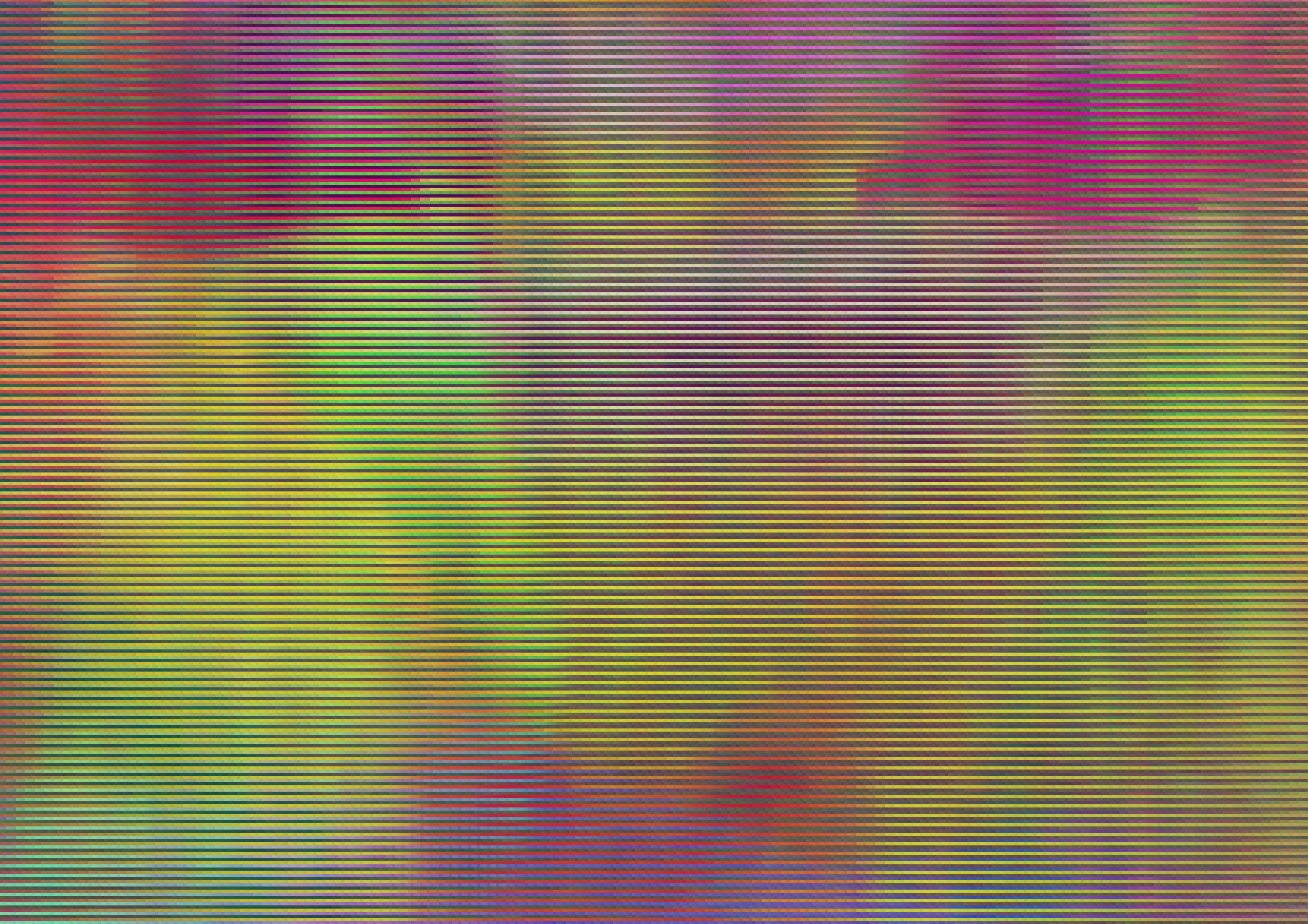
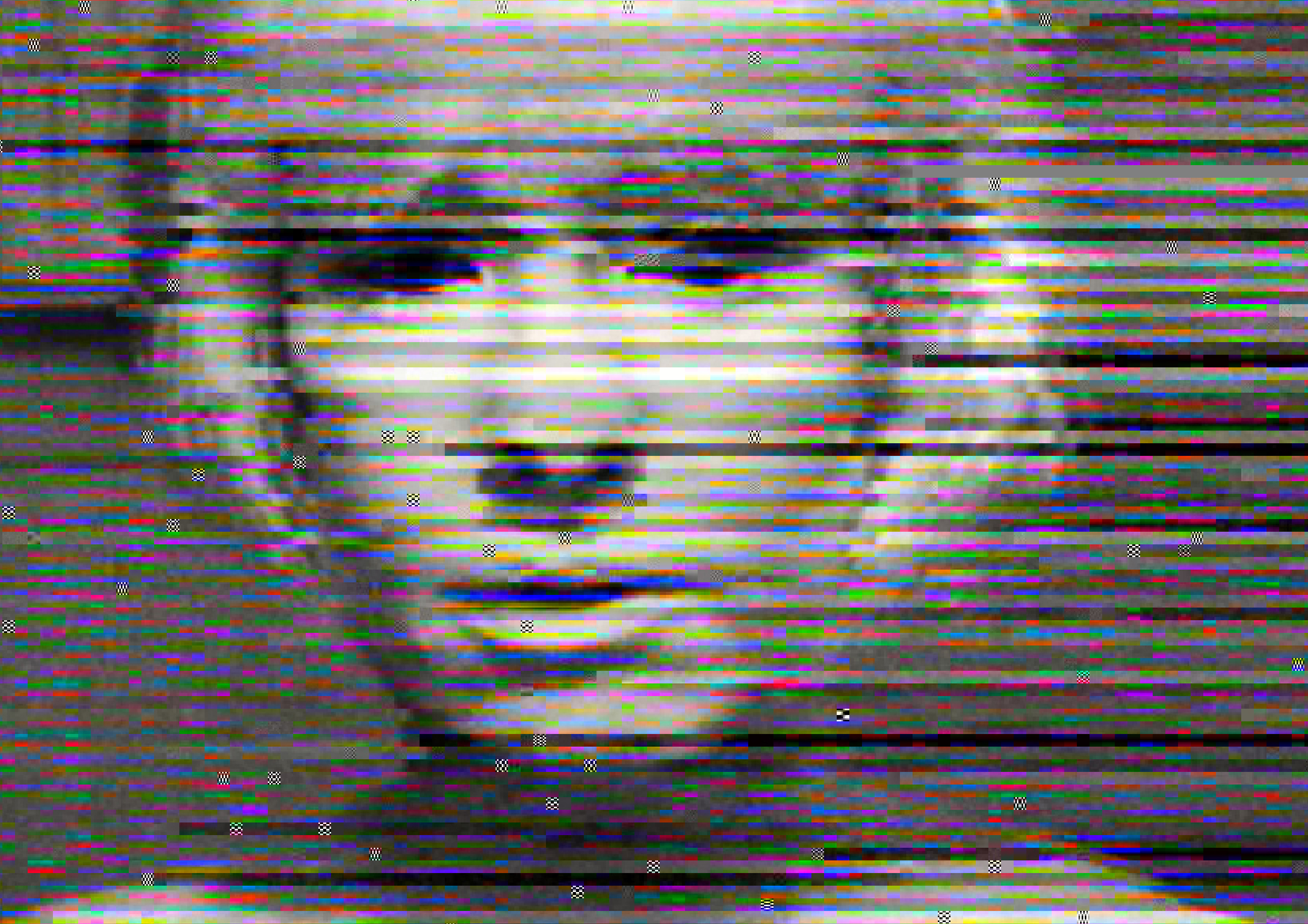
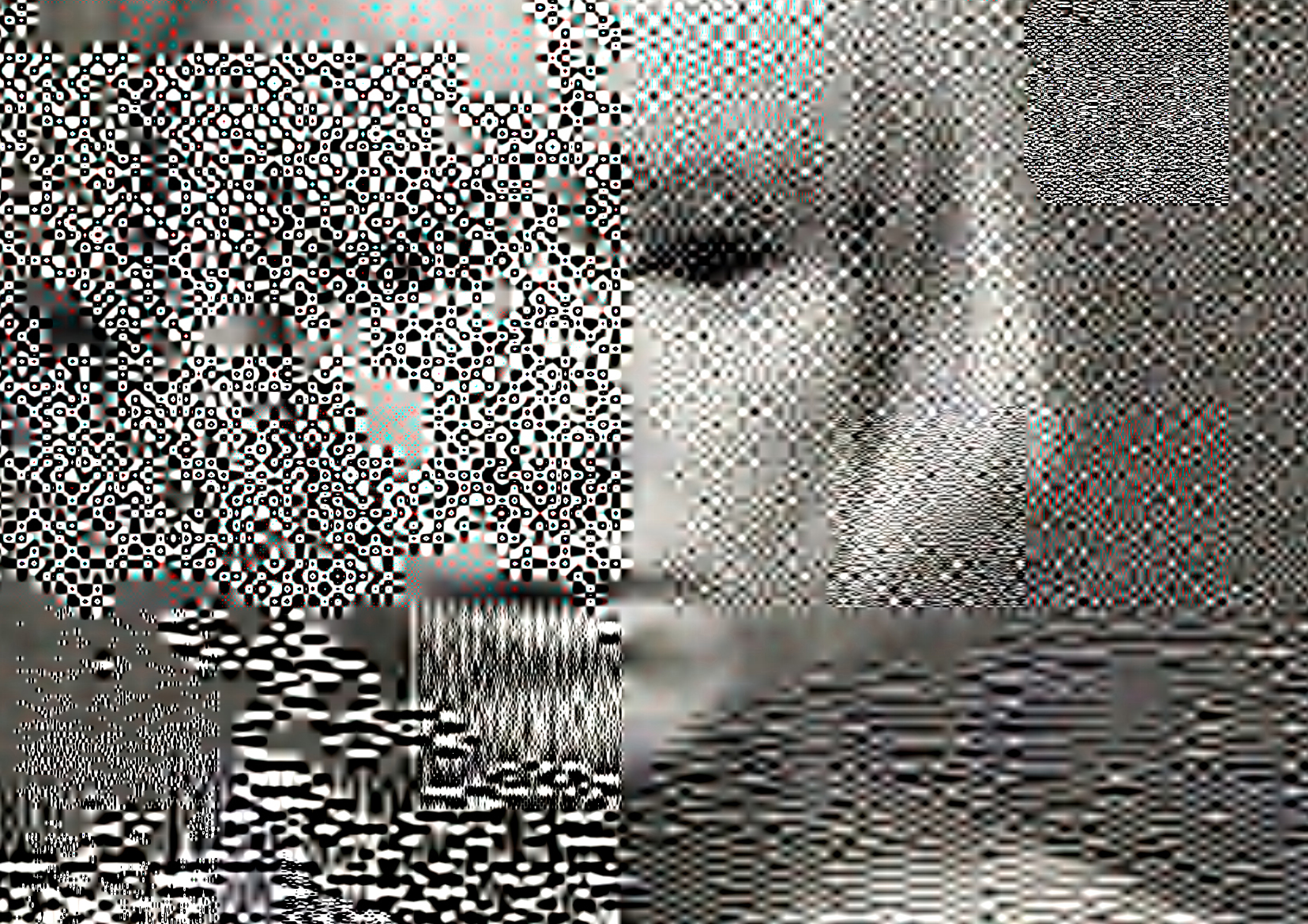
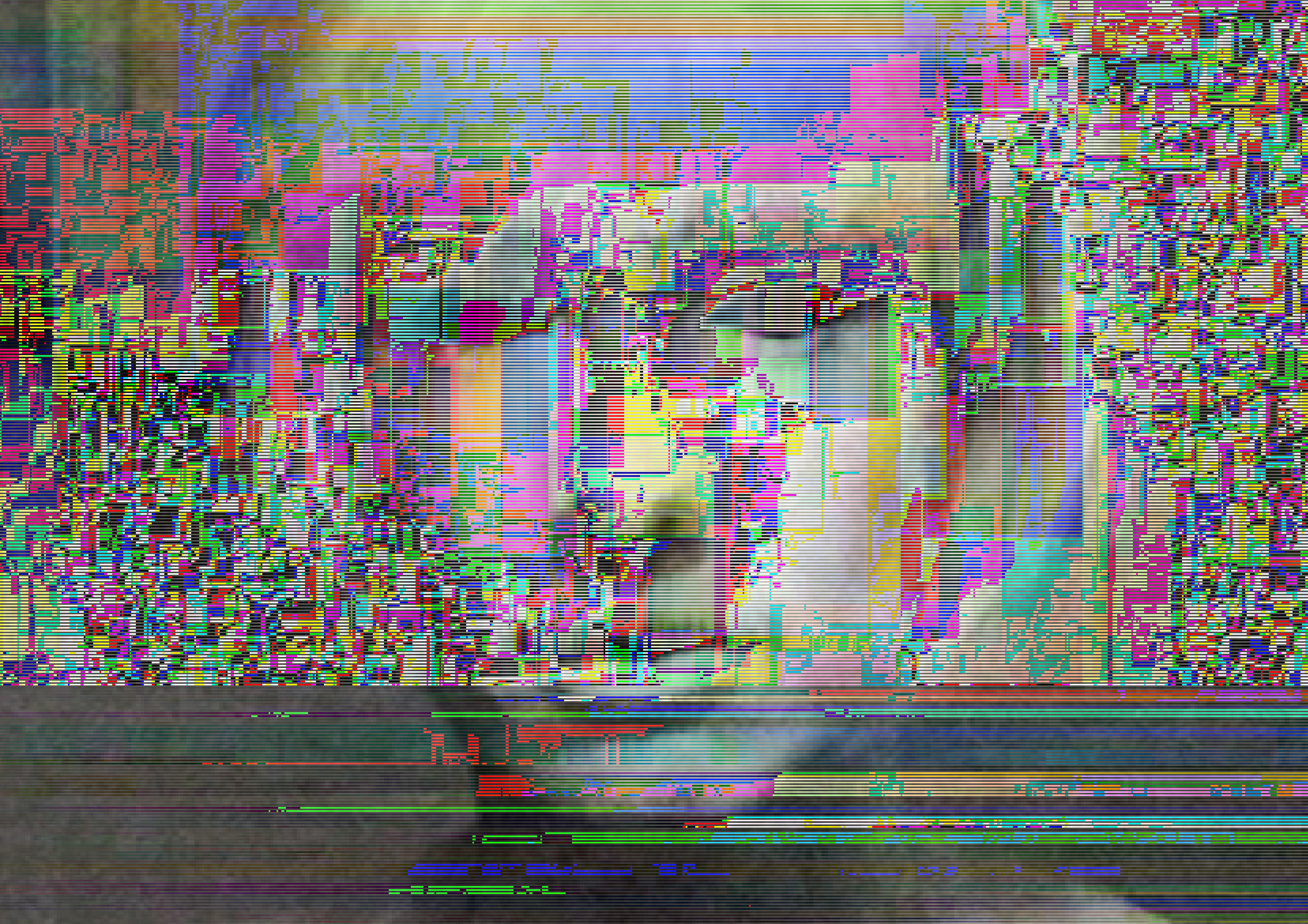
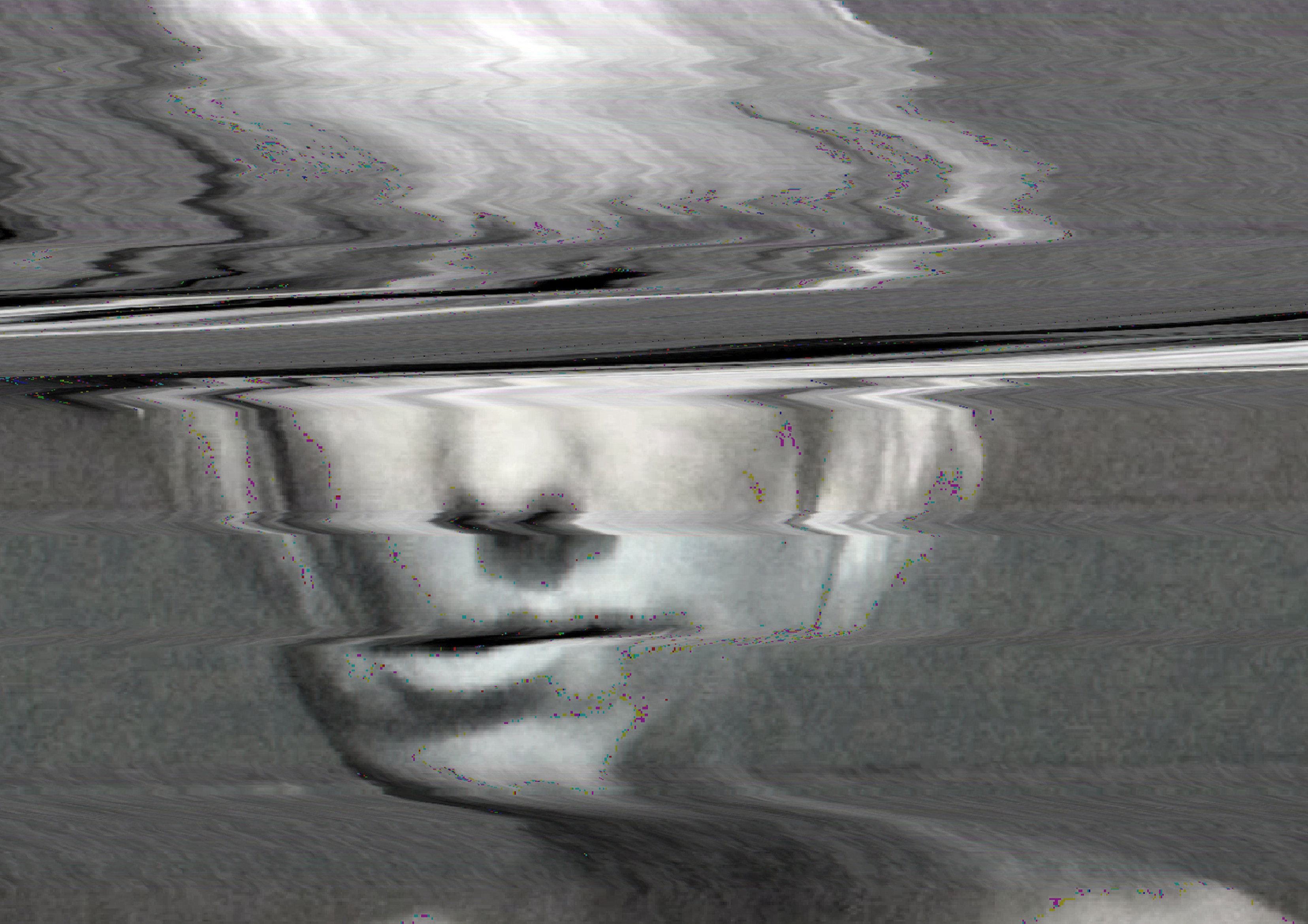
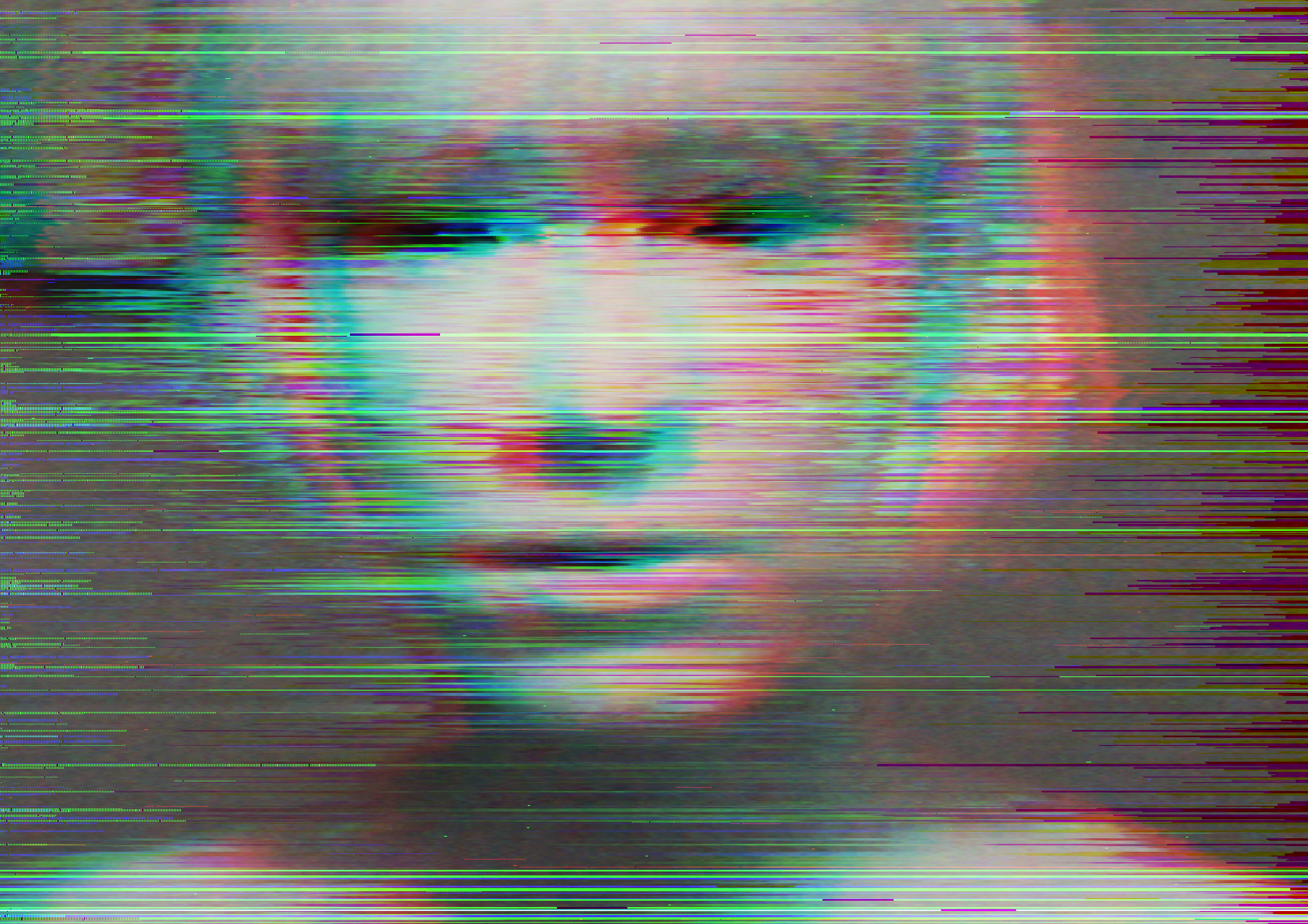


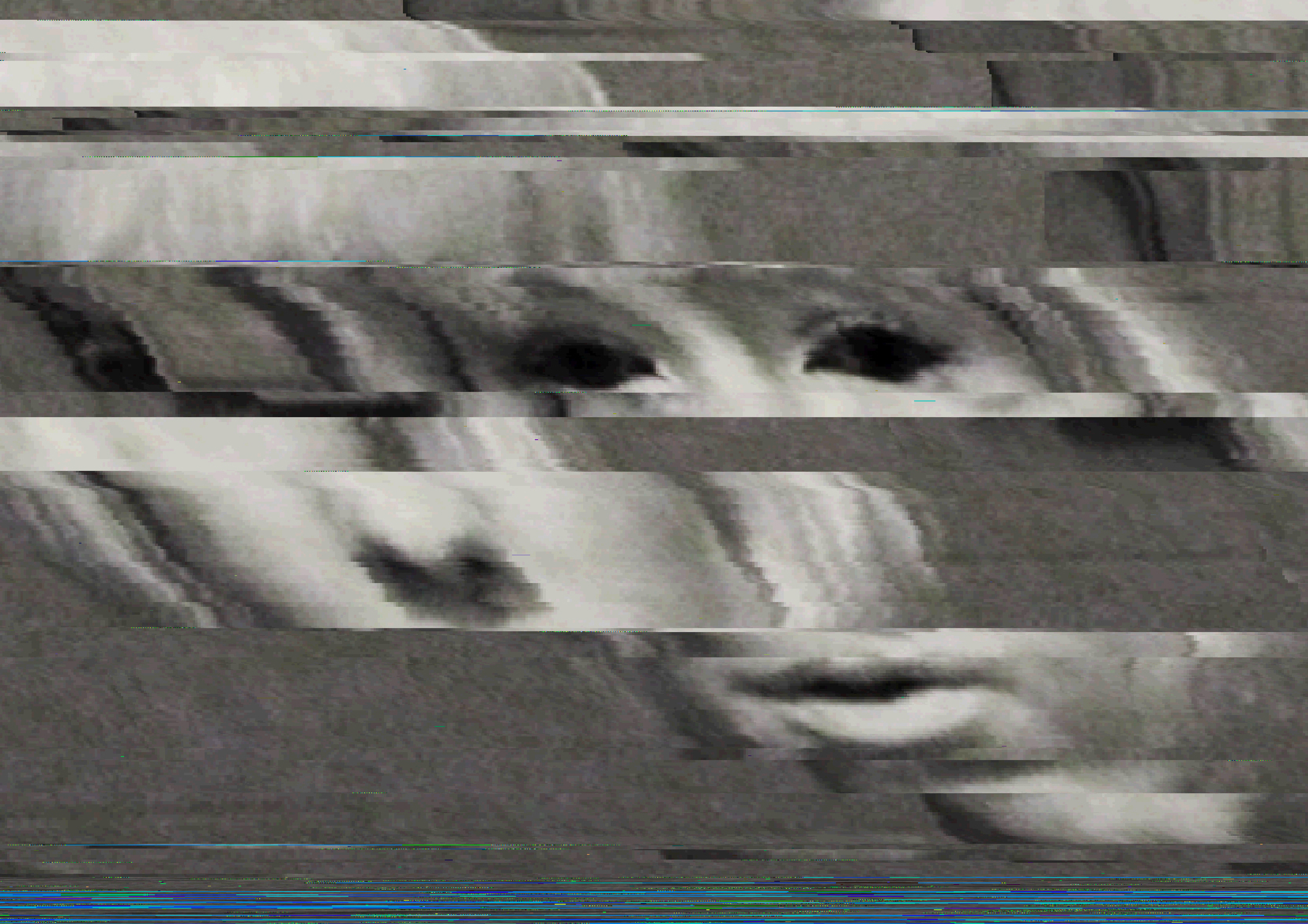
Vernacular of File Formats (2009-2010). Photoshop RAW, JPEG, JPEG 2000, PNG, BMP, Photoshop, TIFF, GIF, Targa.
Digital Prints on Dibond (matte finish).
Digital Prints on Dibond (matte finish).
Dear MR. Compression (2010)
Corrupt tango
There is not sufficient data.
Please enter data
Your file has invalid markers.
Enter new markers
Your dimensions do not correspond.
Change dimensions
ERROR
Goto data therapy and repair your registry
Your keyframes are missing
Your codecs are not supported
Please respect the software
Now it is too little too late [system shut down]
Dear mr compression
I write a 1000 poems to you
Is this what they call progress?
Warmly yours,
the noxious angel of history
Corrupt tango
There is not sufficient data.
Please enter data
Your file has invalid markers.
Enter new markers
Your dimensions do not correspond.
Change dimensions
ERROR
Goto data therapy and repair your registry
Your keyframes are missing
Your codecs are not supported
Please respect the software
Now it is too little too late [system shut down]
Dear mr compression
I write a 1000 poems to you
Is this what they call progress?
Warmly yours,
the noxious angel of history
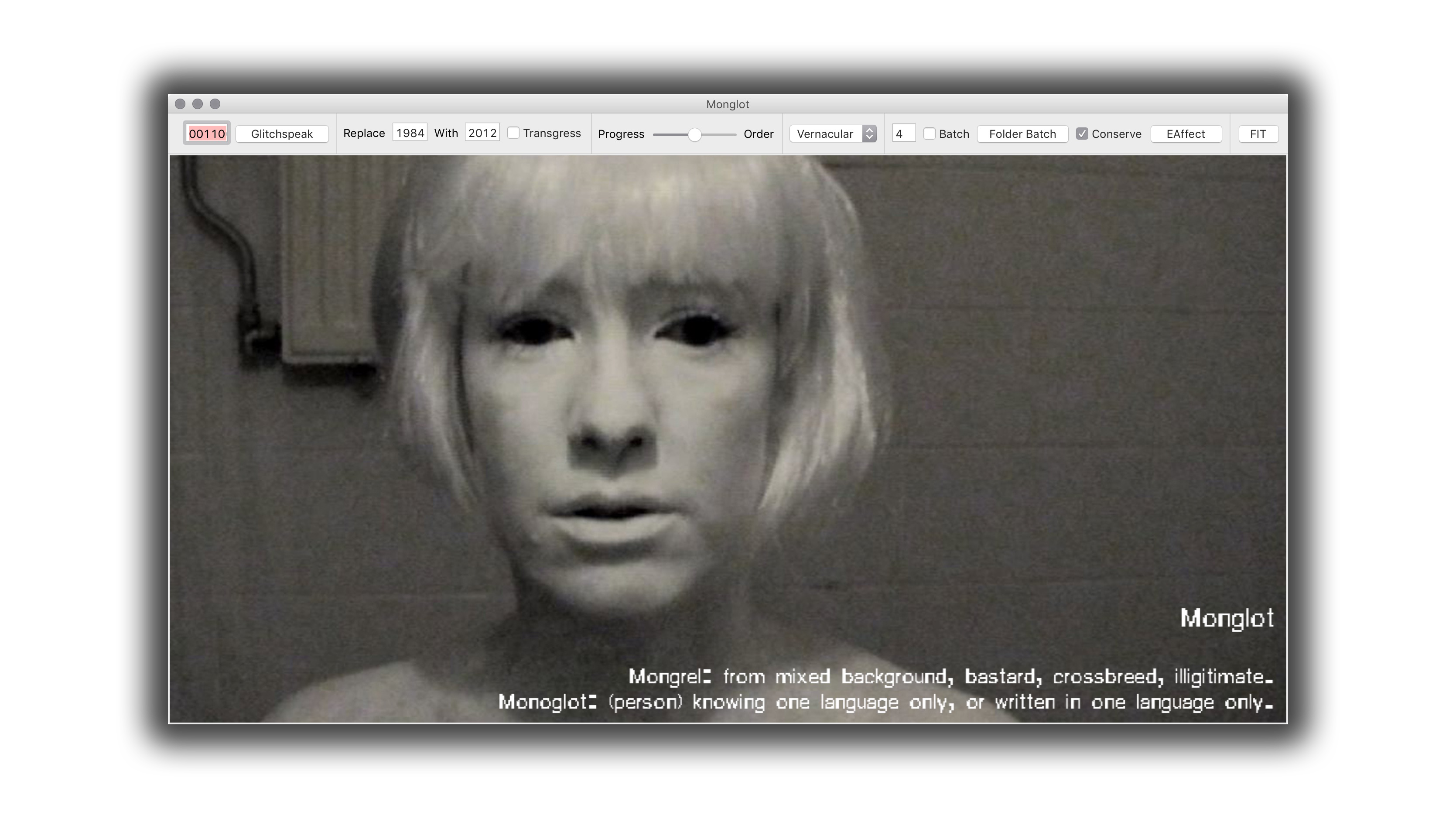
Why make (another) ‘glitch’ software
Realize that the gospel of Glitch Art also tells about new standards implemented by corruption. Not all Glitch Art is progressive or something new. The popularization and cultivation of the avant-garde of mishaps has become predestined and unavoidable. Be aware of easily reproducible glitch effects, automated by softwares and plug-ins. What is now a glitch will become a fashion.**
What I find today in the Glitch Art Flickr pool, are images opposing my original definitions of glitch - a short-lived fault in a system, inducing affect such as surprise or shock - and glitch art - work that makes us critically and radically challenge normative knowledge, values, habits and expectations. Instead, glitch art has become more and more like a style, or even a genre.
While glitch art as a style recalls Homi Bhabhas': "almost the same, but not quite" or “mimicry of digital slippage”, the ‘real’ glitch in glitch art has slowly diminished into a virtual signifier. The by popular culture commodified side of glitch has become a primal part of a new ‘glitch-economy’, which has left me to be believe I should pay more attention to this 'other side of the coin'.
This is why I decided to teach about the materiality of file formats; their different languages, slang or dialects, and how these specific qualities, rules and rhetorics can be exploited as a generative matter to create new images (a practice closely related to databending). I named the workshop "A Vernacular of File Formats" and showed different compression based artworks, while supplying the students with methods and tools to create their own format based research, and possibly art and design.
One of the troubles I ran into during the workshop was that the tools I had were not ideal for such a workshop; with every other file format we set out to manipulate we had to switch softwares, which between the different OSs' on the students computers became a real *pain*.
When I spoke to Johan Larsby (the creator of Swutits) about the lack of software, he proposed a collaboration - which is how the Monglot project started.
︎ Monglot only worked on MacOS 10.5 and 10.6. In 2016 KernelEquinox opensourced a program inspired by Monglot for Windows -> ︎
︎ More about monglot and its strange interface here
︎ Download Monglot, code, Monglot master
︎ Monglot only worked on MacOS 10.5 and 10.6. In 2016 KernelEquinox opensourced a program inspired by Monglot for Windows -> ︎
︎ More about monglot and its strange interface here
︎ Download Monglot, code, Monglot master
Monglot (2011)
A Glitch Software collaboration with Johan Larsby (SE) 2011.
Of Mimicry and Glitch Art: The Ambivalence of a 'Colonial' Glitch Art discourse
(order and progress || chaos and destruction)
The name Monglot is a degeneration of the terms Mongrel and Monoglot (the term also references Homi Bhabha's "forked tongue" of colonialism and something I would like to refer to as Glitch Speak).
*/
Mongrel: the offspring of a variety of species, of mixed background, bastard, or imperfect crossbreed
Mongrel: the offspring of a variety of species, of mixed background, bastard, or imperfect crossbreed
Monoglot: knowing only one language; monolingual.
*/
*/
Generally, glitch aesthetics or compression artifacts such as fragmentation, grain, ghosting, heterodynes, interlacing, jitter, jaggies, (…) posterization, pixelating, quantization error, ringing, staircase noise, scan lines (…) come to the surface because of an accidental flaw in the image data, which shows on the surface of the image itself.
The Monglot software generates glitches. It does this by adding a random or chosen error to the image-data, which is encoded via a compression language of choice. This error than sits on the surface of the image. In doing so Monglot mashes two languages together: the language of the compression and the visual image itself.
While for most glitch softwares the final product is the focus, Monglot focusses on the /experimental/, generative part of glitching.
By comparing different file formats and their behaviors, Monglot can be used to learn and research about file formats.
Monglot aims to show the ambivalence (cool vs. hot) and the double articulation (encoding vs. image data) of (file format-based) Glitch Art.
The user of Monglot is able to repeat an error by clicking ‘Glitchspeak’ or chose a particular error on the ‘Replace’ function of the software. This is how Monglot exists as a compromise in-between cool and hot.
The user of Monglot is able to repeat an error by clicking ‘Glitchspeak’ or chose a particular error on the ‘Replace’ function of the software. This is how Monglot exists as a compromise in-between cool and hot.

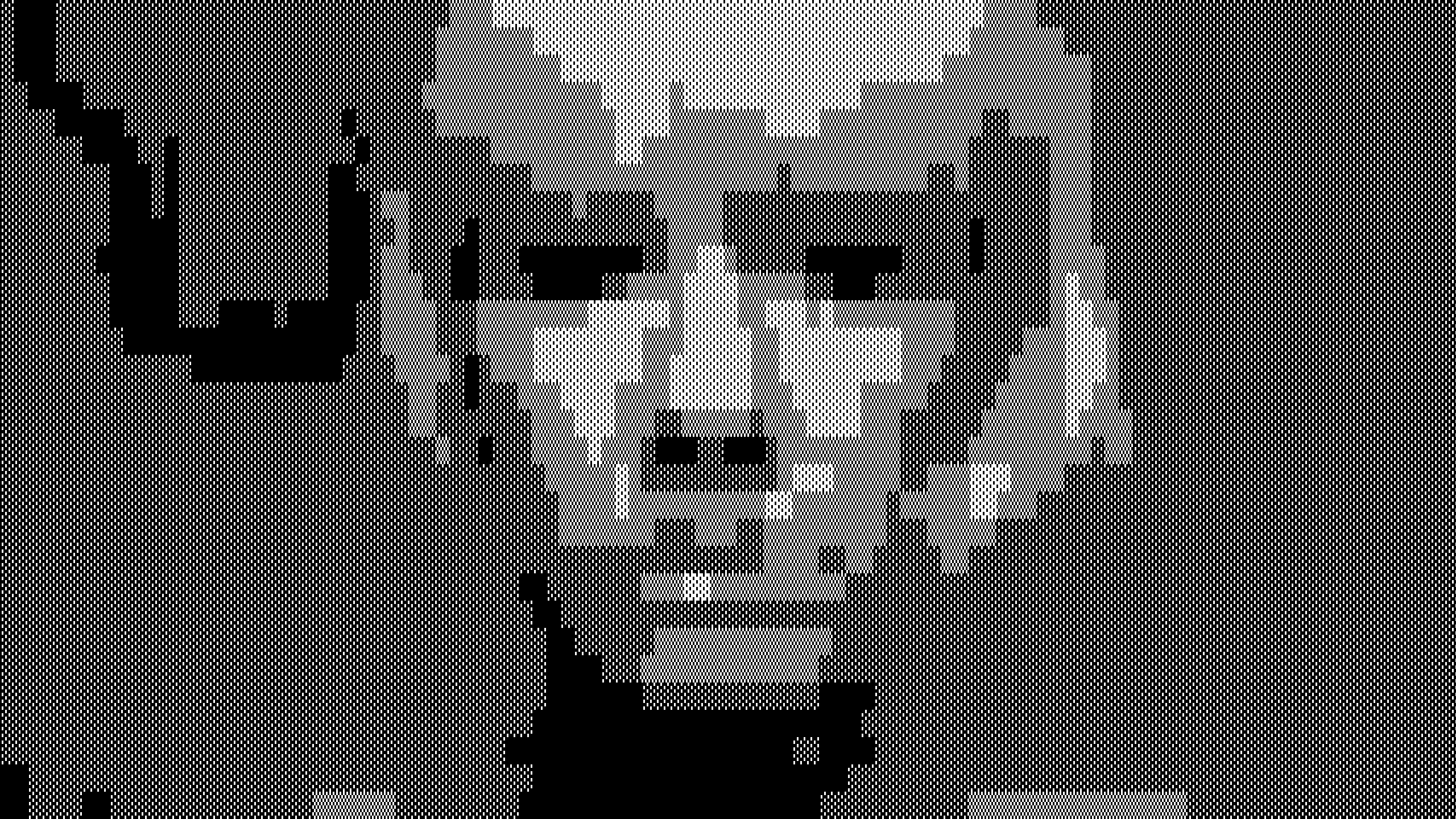




Extrafile (2011)
Extrafile vs. Monglot: a commission for Kim Asendorf, 2011. ︎
From the Extrafile project wesbite:
ExtraFile is conceptual software art with a practical usage, developed in 2011 by Kim Asendorf.
Its main intention is to wiggle the static system of image file formats.
Extrafile started with the idea of inventing a new image file format, a format as a piece of art, far away from the mainstream and commercial standards. A format that would exist just to express the feeling of using and saving data in a new, fictitious or artificial way and bringing the filename extension into the scope of the artwork itself. In simple terms: Creating an exclusivity.
The freedom not to have to pay attention to the file size or the loading and saving times provides the option to implement artistically byte orders, odd quality behaviors and visual designed formats.
ExtraFile is breaking the rules of commercial formats like JPG, PNG or TIFF. It is a pioneer art project in storing image data. The process and the resulting bytes, regardless of content, become the artwork itself.
You want painters to build their own canvas?
Digital artists and collectors deserve exclusive formats. Personalized files, including costume headers or comments. Every bit could be placed like the artist wants it.
ExtraFile is a native Mac OS X image converter application with the ability to open, preview and save the most common image file formats. It offers the possibility to use the seven build-in formats, 4Bit Components, Block Ascii, Block Indexed, Channel Compressed Image, Monochrome Collector File, Uniform Spectrum and the ExtraFile Format, to store image data.
ExtraFile is an open source project,
the source code is available on GitHub under the Artistic License 2.0.
Notes, comments and related projects:
Extrafile vs GLI.TC/H Extrafile vs. A Vernacular of File Formats by Rosa Menkman
Extrafile - tiff > cci / bmp > cci by Jose Irion Neto
when we ran out of formats, there was ExtraFile by Bit Synthesis
EXTRAFILE by Hellocatfood
extrafile by Pixelnoizz
.
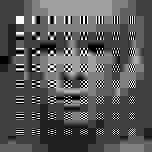
WRITTEN (THEORY)
>>> APPROP/R/PIRATE
>>> BEHIND WHITE SHADOWS (OF IMAGE PROCESSING) (2017)
>>> ADDENDUM (2017)
>>> APPROP/R/PIRATE
>>> BEHIND WHITE SHADOWS (OF IMAGE PROCESSING) (2017)
>>> ADDENDUM (2017)
ARTWORKS (PRACTICE)
>>> Pique Nique pour les Inconnues (2017 - 2020)
>>> The i.R.D Perfect DE/CALIBRATION ARMY and 365PERFECT (2017 - ...)
>>> PATCH (for the i.R.D Perfect DE/CALIBRATION ARMY) (2017)
>>> Pique Nique pour les Inconnues (2017 - 2020)
>>> The i.R.D Perfect DE/CALIBRATION ARMY and 365PERFECT (2017 - ...)
>>> PATCH (for the i.R.D Perfect DE/CALIBRATION ARMY) (2017)
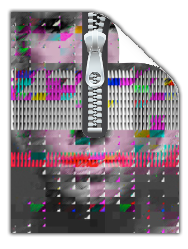
Over the years, I have found many different copies of the image of my face (hailing from the Vernacular of File Formats) used both with and without permission or accreditation.
>Here< you can find a small collection of examples
I believe and publish with a Copy <it> Right ethic:
To me, copying as a creative, exploratory, and educational act is free and encouraged, provided proper accreditation is given. However, when copying becomes commodification and profit is anticipated, explicit permission must be sought and compensation may be requested.
As I began finding my face on commercially available objects, commodified and uncredited, I wondered what it meant to lose authorship and ownership of my face, and whether historical precedents exist.
During my research I came across the stories of color test cards: photographs of Caucasian women used to calibrate analog and digital image-processing technologies. These women have been reused endlessly, yet very little—sometimes not even their names—is known about them.
>Here< you can find a small collection of examples
I believe and publish with a Copy <it> Right ethic:
First, it’s okay to copy! Believe in the process of copying as much as you can; with all your heart is a good place to start – get into it as straight and honestly as possible. Copying is as good (I think better from this vector-view) as any other way of getting ’there.’
NOTES ON THE AESTHETICS OF ‘copying-an-Image Processor’
– Phil Morton (1973).
To me, copying as a creative, exploratory, and educational act is free and encouraged, provided proper accreditation is given. However, when copying becomes commodification and profit is anticipated, explicit permission must be sought and compensation may be requested.
As I began finding my face on commercially available objects, commodified and uncredited, I wondered what it meant to lose authorship and ownership of my face, and whether historical precedents exist.
During my research I came across the stories of color test cards: photographs of Caucasian women used to calibrate analog and digital image-processing technologies. These women have been reused endlessly, yet very little—sometimes not even their names—is known about them.
This resulted in the research essay Behind White Shadows, which was published in:
Behind White Shadows essay for solo show (TRANSFER gallery, NY, 2017)
Faceless, De Gruyter, 2018 (ed: Bogomir Doringer)
Performing the System (ed: Nora Brünger, Luzi Gross, Torsten Scheid: 2019, Universitätsverlag Hildesheim)
Computer Grrls (ed. Inke Arns, HMKV, 2021)
Behind White Shadows was also featured in the Cyberfeminism Index (ed. Mindy Sue, 2023)
Behind White Shadows essay for solo show (TRANSFER gallery, NY, 2017)
Faceless, De Gruyter, 2018 (ed: Bogomir Doringer)
Performing the System (ed: Nora Brünger, Luzi Gross, Torsten Scheid: 2019, Universitätsverlag Hildesheim)
Computer Grrls (ed. Inke Arns, HMKV, 2021)
Behind White Shadows was also featured in the Cyberfeminism Index (ed. Mindy Sue, 2023)
